Nothing personal. “Exclusively business”: the history of the creation of “The Godfather” (10 photos)
March 14, 2022 marks the 50th anniversary of Francis Ford Coppola's The Godfather. The story of the creation of the film is no less dramatic and entertaining than the film itself. The director considered this the most terrible experience of his life, and even the subsequent stunning success could not rid him of unpleasant memories. 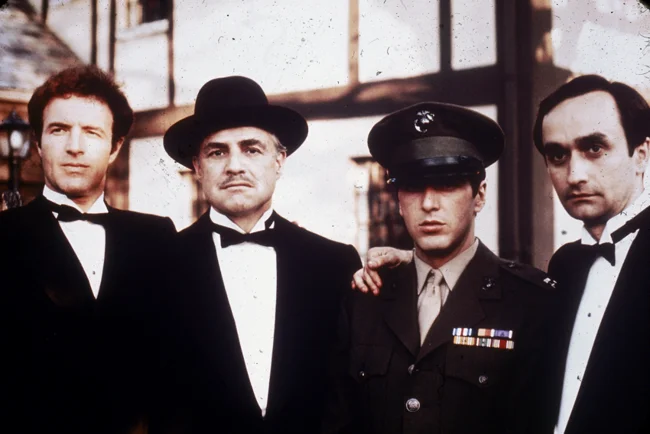
However, two years after the release of the first film, on December 12, 1974, Coppola gave the world one of the best sequels ever made - and this fact seems even more incredible when you read the history of the creation of the first part.
Francis Ford Coppola did not want to film the novel
In 1969, Francis Ford Coppola, Walter Murch, George Lucas and Caleb Deschanel moved to San Francisco to start their own independent company, American Zoetrope. The filmmakers were opponents of Hollywood, admired the works of Jean-Luc Godard, Federico Fellini, Michelangelo Antonioni, Akira Kurosawa, Francois Truffaut and drew inspiration for their films from the masterpieces of world cinema. Coppola was at that time the only one who managed to collaborate with Warner Bros., and the team hoped that the studio would help them with financing. The management gave the go-ahead to the creation of Zoetrope's debut work - THX 1138 by George Lucas, but due to improper marketing, the film failed miserably at the box office, and the company's management withdrew its capital.
In 1970, Zoetrope fell behind on its bills. There were rumors that if Coppola didn't pay up, it would be closed. Then Lucas convinced his friend to consider the offer from Warner Bros. adapt the novel by Mario Puzo.
Coppola found the book to be very tasteless, overly violent and contrary to his principles of not making typical Hollywood blockbusters, but Lucas assured him that he would make a great film. In the end, Francis was forced to make a deal with his conscience and took on the project to save Zoetrope from collapse. 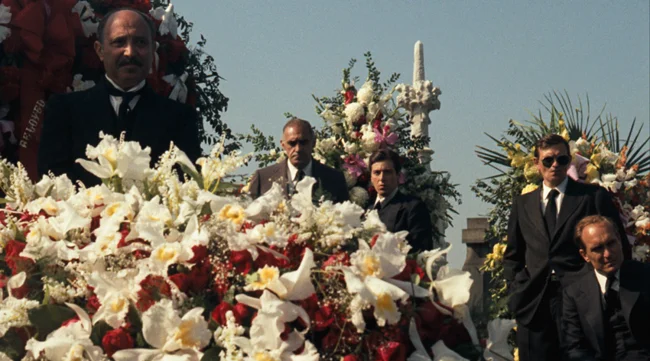
The novel achieved unprecedented success after its release, but many film companies doubted the need for its film adaptation due to the romanticization of the mafia. In 1968, Paramount released the gangster film Brotherhood starring Kirk Douglas, but audiences didn't particularly like it. Robert Evans, who was then the studio's head of production, did everything he could to convince the president to approve the film adaptation of The Godfather. He said that "Brotherhood" was unsuccessful because the film was made by a Jewish team.
The Godfather was supposed to be entirely Italian-American. There is a legend that Francis Ford Coppola was considered for the director's chair only because he was the only director he knew of with Italian-American roots.
Coppola insisted that instead of the 70s, the film should be set in the 40s. The producers were against it, since to make the era realistic, a much larger budget for sewing costumes and sets was required than they had expected, but the director did not give up.
Studio employees admitted that Coppola set the rules as if he imagined himself to be Stanley Kubrick, although many of his projects at that time were considered failures.
However, Mario Puzo listened to Coppola's proposal. The writer admitted that he and Francis worked so closely on the script that he no longer remembers which ideas belonged to him and which to Coppola.
“It seems to me that the whole film is entirely his merit,” Puzo said. 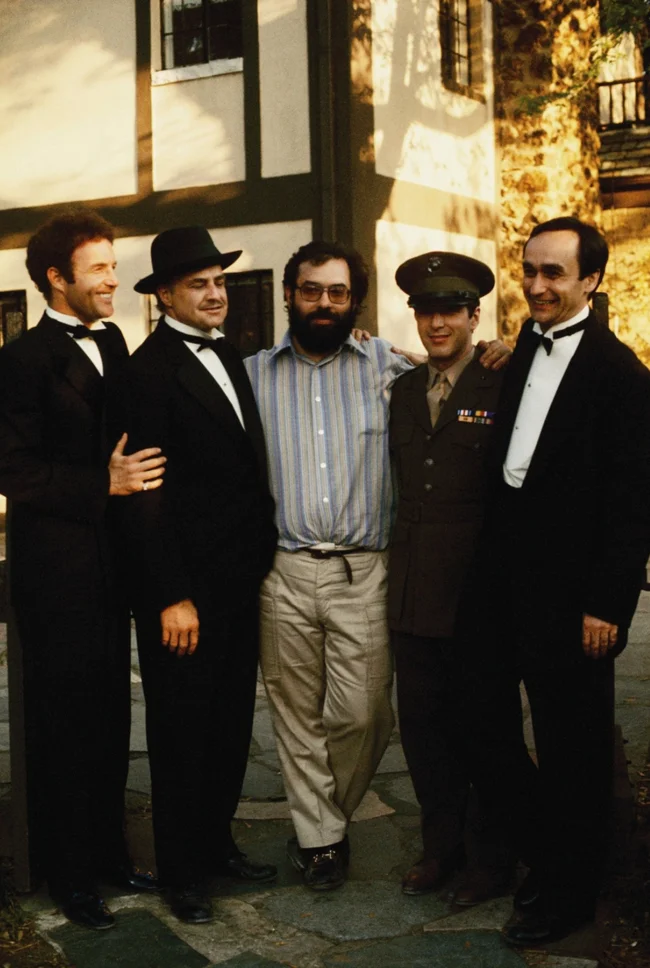
Until recently, Coppola believed that he was making a film that would ultimately destroy him. In a sense, according to the director, this is what happened: everyone wanted to see a continuation of the gangster saga from Francis, and not his own works. “The Conversation,” which Coppola worked on for quite a long time, was of no interest to anyone. He was allowed to start producing the film only because the second part of The Godfather loomed on the horizon.
“The main element of any art is risk. Without it, it is impossible to create something incredibly beautiful, something that no one has ever seen before,” he admitted in an interview with NPR.
In the same way, he took a chance with the choice of actors - and he was right. At their first meeting, the director asked Brando, Pacino, Caan, Duvall and his sister Talia, who played Connie, to come hungry. When the actors sat down at the table, Coppola suggested they act out an impromptu dinner scene. Each of the artists was afraid of Marlon Brando and admired him, which was reflected in the performance. This is how the director decided on the characters of his characters.
The producers were against Marlon Brando 
The producers did not want Marlon Brando to play Vito Corleone. By that time, notoriety had spread around him: the actor was known for his demanding performance of any whims, refused to memorize lines, asked for exorbitant fees, tried to control the film, and after the death of his mother, he seemed to have completely lost interest in the profession.
Around the same time, it became known about the artist’s incredible appetite: in the essay “A Prince in His Domain,” Truman Capote wrote that in just one meal, Brando could eat soup, steak, potatoes, a plate of spaghetti, salad, cheese, apple pie and wash down all with milk. However, Brando loved ice cream most of all. It was said that during the filming of Mutiny on the Bounty, his trousers tore 52 times, even an elastic patch did not help. 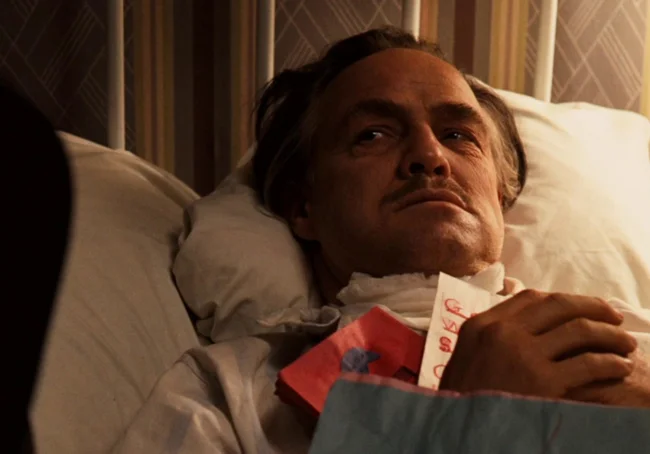
In the 60s, Brando was plagued by box office failures, and producers did not want to collaborate with the actor. Imagine their surprise when Francis Ford Coppola suggested him for the role of the head of one of the mafia clans in New York. In addition, Mario Puzo personally wrote to the actor - in his opinion, Marlon was the only one who should play Don Corleone.
The producers were skeptical about the scandalous figure of the artist, and Brando himself at first refused to appear in the film, where, according to him, the mafiosi were glorified. However, after reading the script, the actor changed his mind. Coppola cunningly helped Brando record video tests: he secretly installed cameras in his house, but the actor quickly saw through the idea. For the most realistic portrayal of the image, Brando stuffed his mouth with napkins and styled his hair with shoe polish. The producers at first did not understand that it was Marlon in front of them, and were glad that a “real Sicilian” would play in the film. 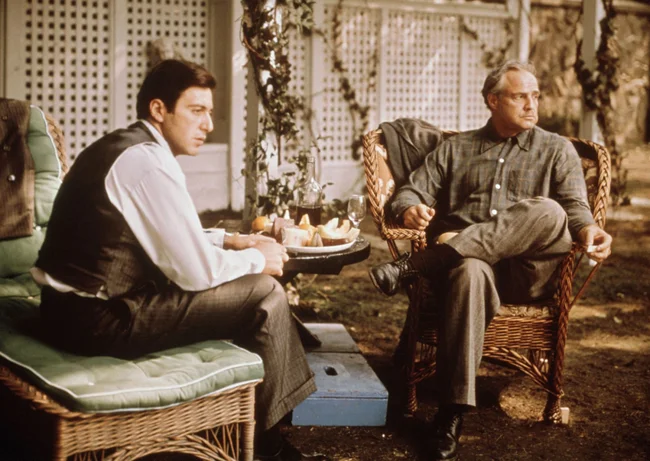
Brando never learned his lines - he believed that improvisation helped him feel more natural on camera. To prevent the work process from stalling, the actor relied on a teleprompter and paper cheat sheets that were glued to his hands. The role of Vito Corleone became one of the best in the actor’s career. Critics wrote that Brando completely overturned the established social perceptions of gangsters in cinema and proved that he still had some powder in his flask, despite numerous failures.
However, “The Godfather” was not without scandals. Marlon Brando was nominated for an Oscar, but instead of himself, he sent the daughter of an Apache Indian chief and actress Sasha Littlefese to present the award. So Brando wanted to condemn the American government for its disdainful attitude towards the indigenous peoples of the country.
They wanted to fire Alya Pacino three times 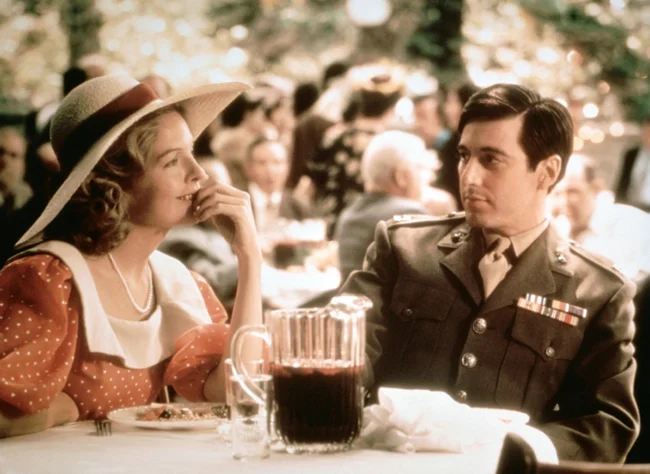
For the role of Michael Corleone, the producers considered Robert Redford (“Butch Cassidy and the Sundance Kid”) and Ryan O’Neal (“Love Story,” “Paper Moon”). However, even while reading the novel, Coppola knew that Michael should be played by the then unknown theater actor Al Pacino.
The director again had to fight with the producers for the right to choose the artist. They saw Michael as tall and handsome, while Coppola saw him as a Southerner, who are known to be short.
The producers agreed when Coppola left to meet Brando in England. Perhaps, the filmmaker said, they watched an excerpt from the only film at that time with Pacino’s participation, “Panic in Needle Park,” or simply met halfway. And yet, during the filming process, Pacino was on the verge of being fired three times - the producers considered his performance sluggish and uninteresting. Al Pacino was very worried that the film would fail at the box office, so he called it one of the worst films ever made.
Filming
Many on the set were skeptical of Coppola and said that the director thought he was someone else. And this despite the fact that he did not have proper cinematic training, and he had only one famous film to his credit - “Patton”.
For example, editor Aram Avakyan weaved intrigues against Coppola. He assured the studio president that he was taking his job carelessly, and practically carried out his plan to fire the director. However, everything changed when the director saw the murder scene of dealer Sollozzo and police captain McCluskey. After this, Coppola asked Avakian to leave the team. 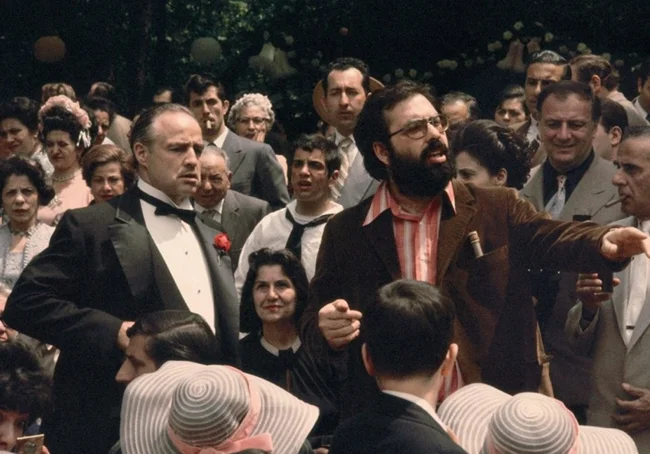
The relationship with cameraman Gordon Willis was also difficult. He planned scenes in advance and used the techniques he was familiar with, while Coppola preferred to approach the material freely, not afraid to experiment, and wanted the same from his actors. The scandal broke out during the filming of a funeral episode in the Corleone house. Al Pacino violated the agreed plan, which is why he fell out of the world. Then Willis stopped the process to re-set the equipment, but Coppola demanded that filming not be interrupted. Angry, the operator left the site, and none of his subordinates was going to act without his order. Coppola’s nerves also gave way at that moment: he locked himself in his office for a while and banged on the door so loudly that the director’s assistant decided that he had shot himself.
After a bitter confrontation, Coppola decided to trust the skill of Willis, who ultimately achieved a unique color scheme. The cameraman called the film's image "a newspaper photograph in poor color."
The Mafia was against filming The Godfather 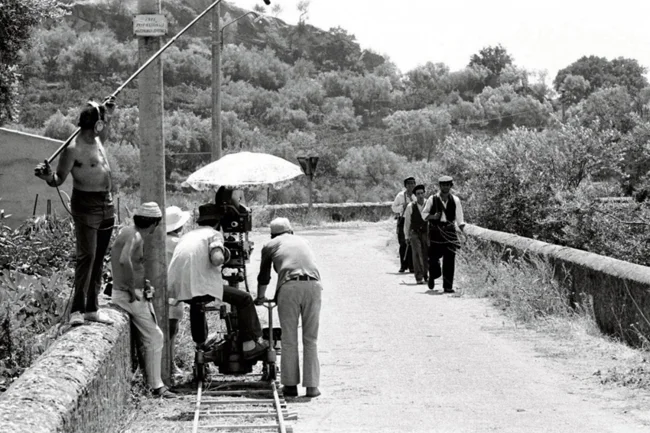
The Italian-American Friendship Association, led by mob boss Joe Colombo Sr., organized a campaign to ban the film due to its stereotypical portrayal of Italian-Americans, who were widely considered gangsters. There were protests in New York, angry letters were sent to Paramount, producer Al Ruddy received anonymous threats, and production manager Robert Evans once received a call threatening to harm his child if he did not stop filming. As a result, Evans contacted Columbo - and they agreed that the word “mafia” should not be used in the tape.
After the conflict subsided, Colombo and his charges even began to support Coppola: they visited the filming, gave advice, and some - for example, Lenny Montano, who played the role of Luca Brasi - starred in films.
Right up until the film's release, Coppola believed that failure could not be avoided. The director once even said: “What have I done? He took a popular novel, full of piquancy and “strawberry”, and turned it into one endless scene of a gang of bandits chatting in dimly lit interiors.” 
The Godfather premiered on March 14, 1972. The lines at the movie theaters were such that the University of California students quickly realized and decided to charge $5 to hold a seat for those who wanted to see the film. By the time the first screening ended, the film had earned $86 million and became the highest-grossing film at that time in the history of cinema.
Al Ruddy and Robert Evans promised to give Coppola a Mercedes if The Godfather reaches the 15 million mark. When purchasing the car, the director asked to send an invoice to Paramount. He considered this gift as a kind of apology for what he had to endure during the filming process.
Peter Biskind wrote in his book “Easy Riders, Raging Bulls” that immediately after the premiere, Coppola began creating another picture. Relatives called the director and congratulated him on his tremendous success, to which Coppola answered rather dryly, “Excellent, thank you,” and again returned to developing the script.
Although the process of creating The Godfather was not easy for each of its participants, the invested effort paid off in a big way. The film was recognized as the best gangster film in America, and Coppola was recognized as one of the most brilliant directors of his time.
